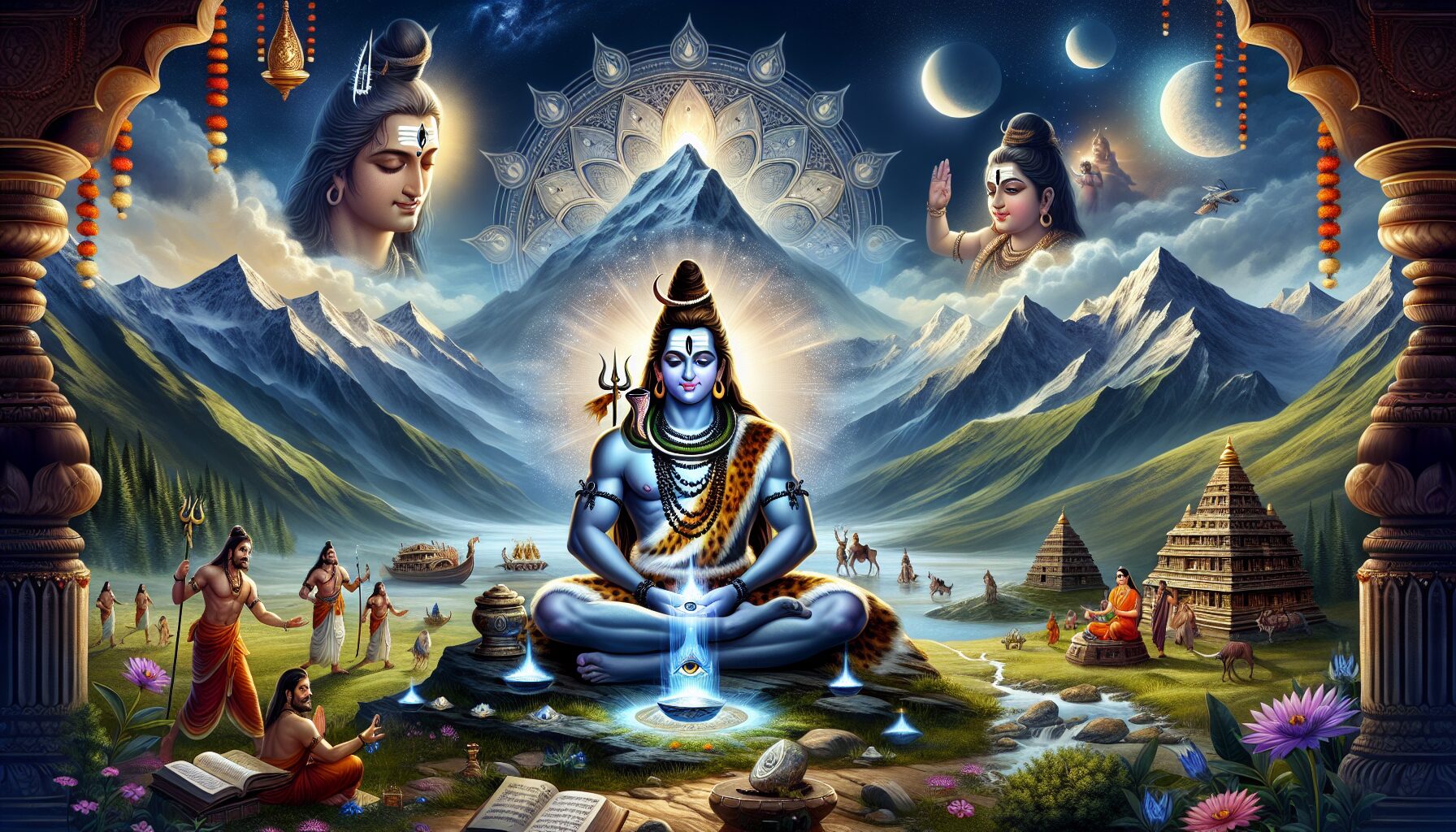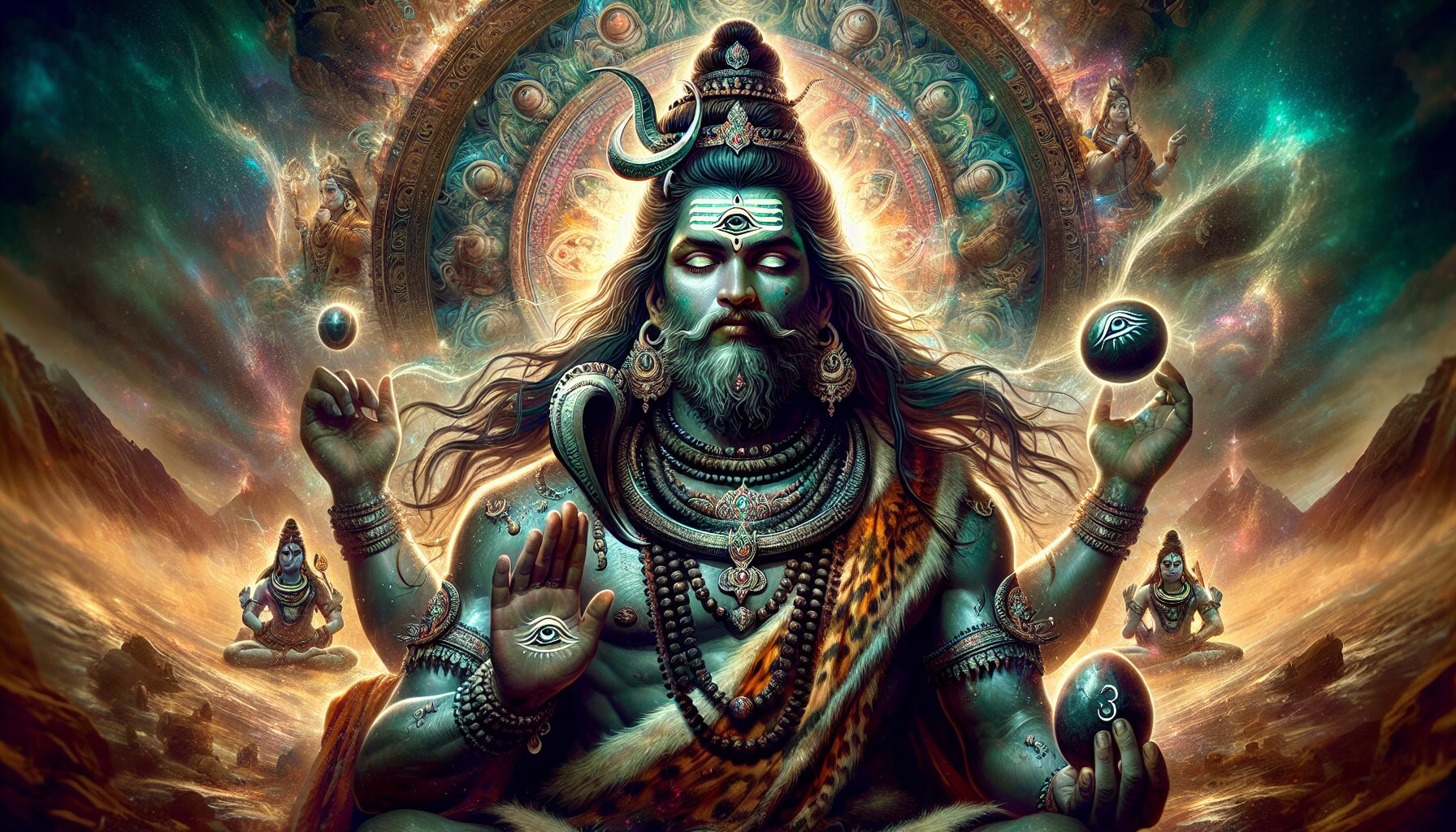Have you ever wondered how Lord Shiva, the powerful and benevolent Hindu deity, acquired his third eye? This fascinating aspect of Lord Shiva’s iconic appearance has captivated countless devotees and spiritual enthusiasts throughout history. Exploring the origins of his third eye unveils a tale of cosmic significance and divine intervention, shedding light on the profound symbolism behind this mystical attribute. Join us on a journey as we uncover the extraordinary story of how Lord Shiva acquired his enigmatic third eye and the secrets it holds.

Table of Contents
The Origin of Lord Shiva
Lord Shiva, a prominent figure in Hindu mythology, is believed to be the supreme god who is responsible for creation, protection, and destruction. He is revered as the epitome of eternal consciousness and is often depicted as a powerful deity with diverse forms and attributes. Understanding the origin and significance of Lord Shiva can provide valuable insights into Hindu mythology and its deep-rooted cultural beliefs.
Hindu Mythology
In Hindu mythology, Lord Shiva is considered one of the three major gods of the Trimurti, alongside Brahma and Vishnu. He is revered as the destroyer of evil and the ultimate reality, symbolizing the cycle of birth, death, and rebirth. It is believed that Lord Shiva existed before time and created the universe through his cosmic dance known as the Tandava. His divine role is multifaceted, representing both auspiciousness and fierce power.
Shiva as the Supreme God
Lord Shiva is often regarded as the supreme god in Hinduism, being the ultimate source of all cosmic energy. As the destroyer, he symbolizes the necessary aspect of life’s cycle, where everything must end for new beginnings to occur. Appreciating Lord Shiva’s role as the supreme god brings about an understanding that destruction is not merely negative but an essential part of the cycle of creation, preservation, and destruction.
Depictions of Lord Shiva
Depictions of Lord Shiva vary across different Hindu traditions and art forms. He is often depicted with a serene countenance, adorned with sacred ash and a crescent moon on his forehead. Lord Shiva’s multiple arms signify his ability to multitask and carry out numerous divine actions simultaneously. Furthermore, his matted hair symbolizes his detachment from worldly possessions and his connection to spiritual realms.

The Importance of the Third Eye
The third eye, or “trinetra,” is a significant aspect of Lord Shiva’s depiction and is associated with various symbolic meanings. It is positioned on the forehead between his two normal eyes and is often portrayed as an eye-shaped mark or sometimes as an actual eye. The third eye holds immense importance in Hindu mythology, representing profound wisdom, intuitive knowledge, and the power to perceive the truth beyond ordinary sight.
The Third Eye Symbolism
The Symbol of Wisdom
Lord Shiva’s third eye is widely regarded as the symbol of supreme wisdom and spiritual insight. It signifies the ability to see and understand the true nature of reality, transcending the limits of ordinary perception. The third eye represents an awakened state of consciousness, where one gains deeper understanding and clarity about the self and the universe. It is believed that those who possess the third eye are bestowed with immense knowledge and insight.
The Power of Destruction
Another significant symbolism associated with Lord Shiva’s third eye is its connection to destruction. As the destroyer, Lord Shiva possesses the power to annihilate evil forces and bring about the necessary end to old cycles, making way for new beginnings. The third eye signifies his ability to burn away negativity, ignorance, and illusions, ultimately leading to spiritual liberation and transformation. It is a reminder that sometimes, destruction is needed to pave the way for growth and renewal.
The Opening of the Third Eye
The opening of Lord Shiva’s third eye is often associated with unique circumstances or divine intervention. It is believed that Lord Shiva can open his third eye at will, using its immense power for various purposes. The opening of the third eye represents a heightened state of consciousness and spiritual awakening. It is said to unleash a tremendous energy that can be channeled for both creation and destruction, depending on the divine purpose.
The Story of Lord Shiva’s Third Eye
The Curse of Lord Shiva
One popular story explaining the origin of Lord Shiva’s third eye revolves around a curse. According to mythology, Lord Shiva was performing intense meditation when the gods approached him seeking help in defeating the demon Tarakasura. Lord Shiva agreed to assist them, but during the battle, the demon’s sons, known as Tarakaksha, attacked him. This infuriated Lord Shiva, who directed his fierce anger toward them.
The Need to Control Kama
The demon Tarakaksha had been granted a boon that made him invincible, except for a son born out of wedlock. Realizing the importance of controlling his anger, Lord Shiva focused his gaze on his divine consort, Goddess Parvati. In doing so, he controlled Kama, the god of desire, who represented the uncontrollable emotions arising from attraction and attachment. By conquering Kama, Lord Shiva was able to maintain his state of meditation and reach a higher realm of consciousness.
The Boon from Lord Indra
Impressed by Lord Shiva’s ability to control his desires, the gods offered him a boon as a gesture of gratitude. Lord Shiva, in his magnanimity, requested the gods to restore the life of the demon’s sons whom he had inadvertently destroyed in his anger. The gods obliged and revived the sons of the demon, further enhancing Lord Shiva’s reputation as a compassionate and just deity.
The Emergence of the Third Eye
Following these events, Lord Shiva’s third eye spontaneously opened, signifying his awakened consciousness and newfound powers. The opening of the third eye revealed the immense spiritual energy emanating from Lord Shiva, which became a defining characteristic of his portrayal in Hindu mythology and art. It serves as a reminder of the balance between destruction and creation, as well as the necessity of maintaining control over one’s emotions.
Legends and Folklore
Shiva’s Third Eye and Kamadeva
Another legend involving Lord Shiva’s third eye revolves around Kamadeva, the god of love. Once, Kamadeva attempted to disrupt Lord Shiva’s meditation by shooting arrows of desire at him. However, Lord Shiva, with his supreme power, instantly incinerated Kamadeva with a fiery glance. This act illustrates the significance of Lord Shiva’s third eye in suppressing desire and focusing on higher consciousness.
Goddess Parvati’s Role
Goddess Parvati, Lord Shiva’s divine consort, is often associated with the third eye as well. It is believed that she possesses a similar eye, which is said to have emerged when Lord Shiva’s third eye opened. The presence of the third eye in Goddess Parvati symbolizes her own spiritual enlightenment and union with Lord Shiva, reflecting the inseparable nature of their divine partnership.
Lord Shiva and Bhikshatana
In the form of Bhikshatana, Lord Shiva is depicted as a wandering ascetic, accompanied by a fierce aspect known as Virabhadra. In this portrayal, Bhikshatana’s third eye represents his divine power and authority. It is often shown emitting flames, symbolizing his ability to incinerate ignorance and dispel darkness. The image of Bhikshatana with his third eye serves as a reminder of Lord Shiva’s role as the supreme destroyer of evil forces.
Shiva’s Third Eye in Modern Culture
The symbolism of Lord Shiva’s third eye continues to hold relevance in modern culture. It serves as a metaphor for the pursuit of knowledge, self-realization, and the transcendence of limitations. Various art forms, literature, and even popular culture often reference Lord Shiva’s third eye as a symbol of wisdom, inner vision, and spiritual awakening. Its iconic representation continues to inspire individuals on their personal journeys of growth and enlightenment.
In conclusion, Lord Shiva’s third eye holds immense significance in Hindu mythology and cultural beliefs. The origin stories, symbolism, and legends associated with the third eye contribute to a deeper understanding of Lord Shiva’s multifaceted nature and his role as the supreme god. Embracing the wisdom and power represented by the third eye can inspire individuals to seek higher consciousness and achieve spiritual growth in their own lives.